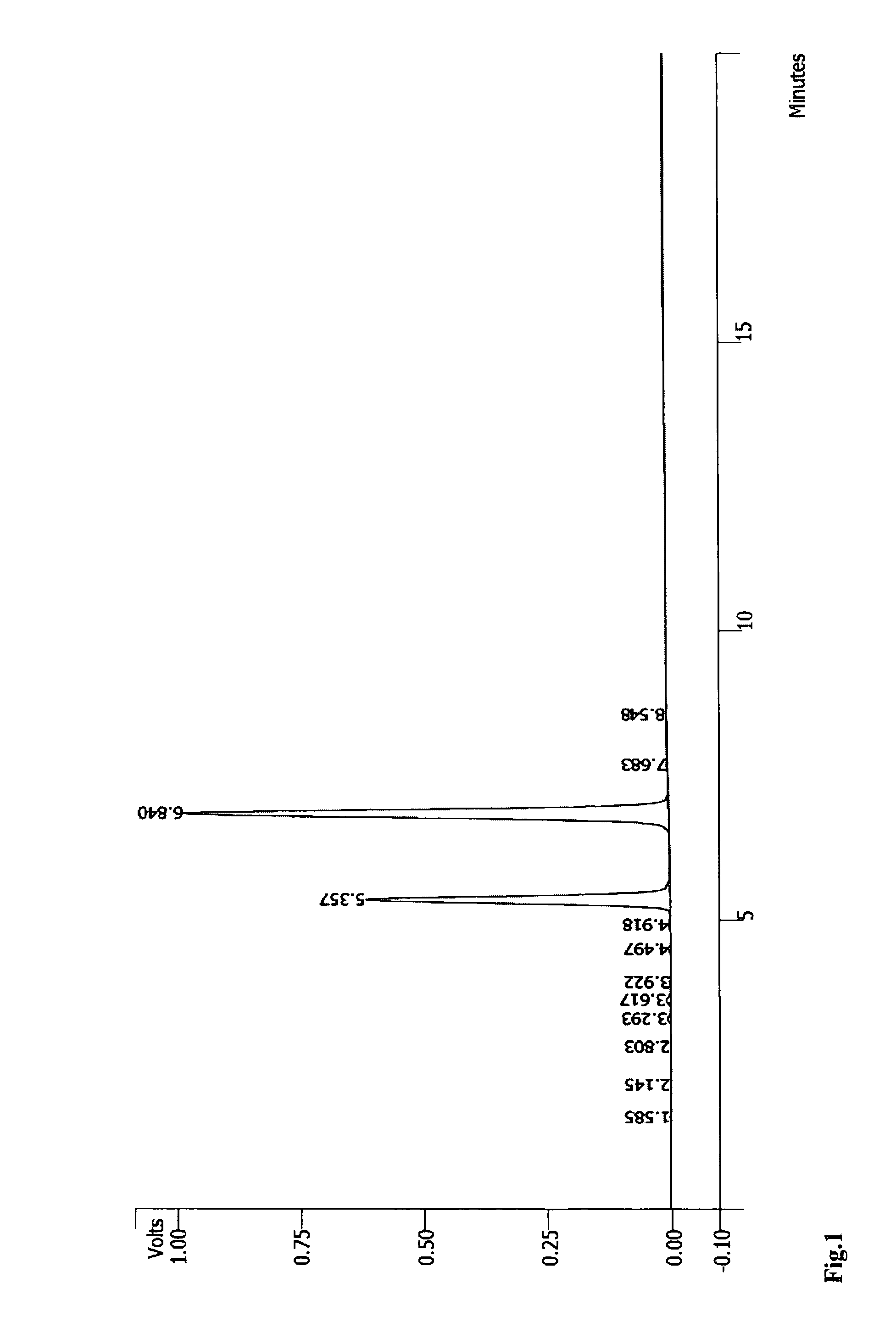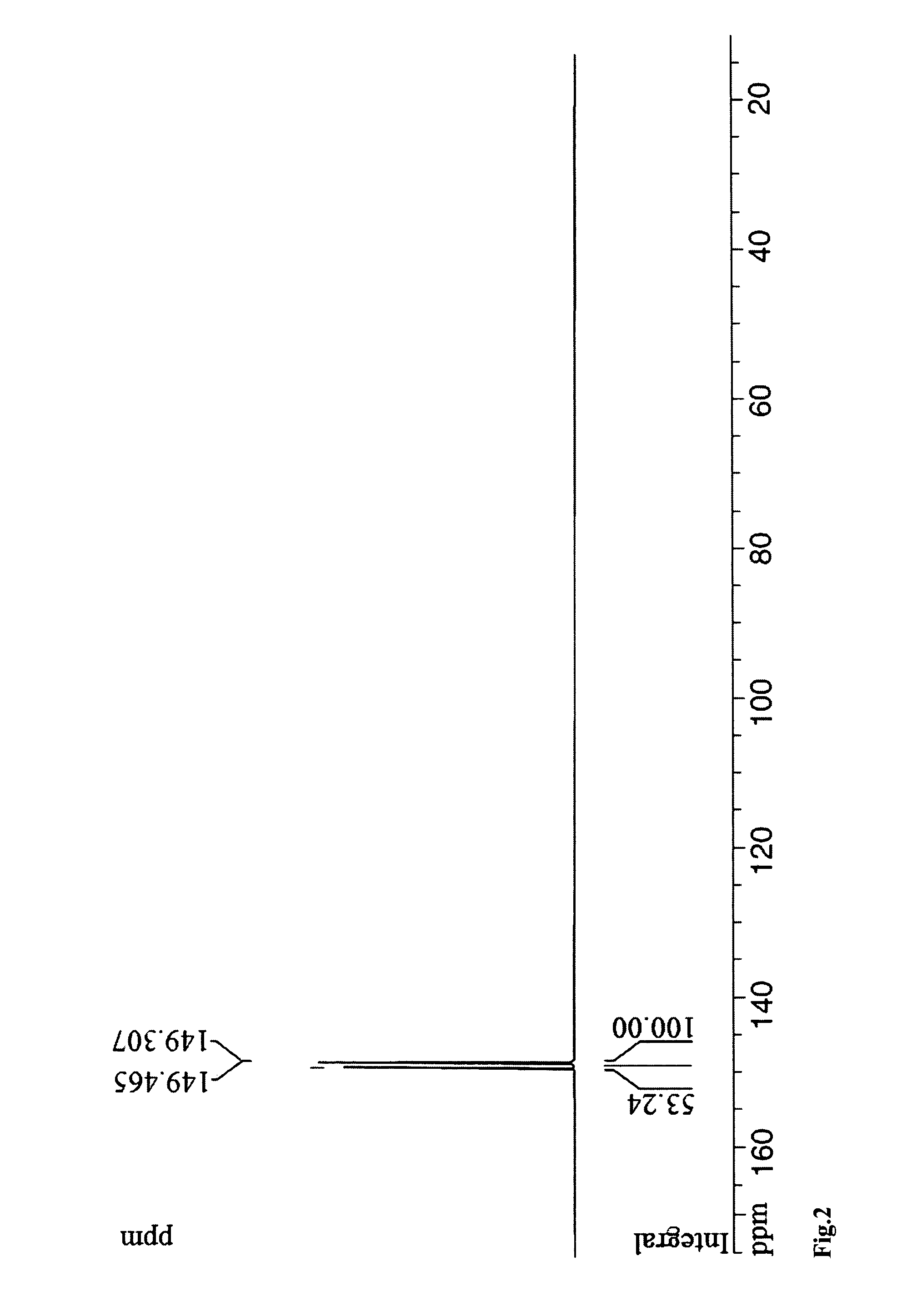RNA synthesis-phosphoramidites for synthetic RNA in the reverse direction, and application in convenient introduction of ligands, chromophores and modifications of synthetic RNA at the 3′-end
a technology of phosphoramidite and rna, which is applied in the direction of organic chemistry, biochemistry apparatus and processes, and sugar derivates, etc., can solve the problems of inability to achieve the synthesis of rna in the reverse direction (5′-3′ direction), lack of the capability of convenient and efficient introduction of many ligands, and the quality of rna produced by these processes remains in question
- Summary
- Abstract
- Description
- Claims
- Application Information
AI Technical Summary
Benefits of technology
Problems solved by technology
Method used
Image
Examples
example 1
Synthesis of N2-Isobutyryl-2′-O-TBDMS-3′-O-DMT-guanosine-5′-cyanoethyl-N,N-diisopropyl-phosphoramidite (16d) as shown in the scheme 2
[0111]N2-Isobutyryl-2′-O-TBDMS-3′-O-DMT-5′-O-benzoyl-guanosine (26d): To the solution of 4 g (7.0 mmol) of the compound 23d in 60 mL of pyridine were added 9.5 g (28.0 mmol) of DMT chloride in one portion at room temperature for 48 hrs. Reaction mixture was quenched with 2 mL of cold methanol then half of the solvent was removed under diminished pressure, mixed with 20 mL of chloroform, washed with 50 mL of saturate sodium bicarbonate and 50 mL of brine. Organic layer was separated and dryed over anhydrous Na2SO4. Flash chromatography with 5:2:3 chloroform / hexanes / acetone provided 1.7 g (27.8%) of the compound 26d. TLC system: 5:2:3 chloroform / hexanes / acetone, Rf=0.42. ESMS 896.1 [C48H55N5O9Si (M+Na)+ requires 896.1].
[0112]N2-Isobutyryl-2′-O-TBDMS-3′-O-DMT-guanosine (27d): To the solution of 14 g (16.0 mmol) of the compound 26d in 196 mL of pyridine an...
example 2
Synthesis of N4-Acetyl-2′-O-TBDMS-3′-O-DMT-cytidine-5′-cyanoethyl-N,N-diisopropyl-phosphoramidite (16c)
[0114]N4-Acetyl-2′-O-TBDMS-3′-O-DMT-cytidine (27c): To the solution of 5 g (6.2 mmol) of the compound 26c in 54 mL of pyridine and 6 mL of methanol mixture were added 6.2 mL of 2 M aqueous solution of sodium hydroxide (12.4 mmol) dropwise with stirring at 0-5° C. during the course of 25 min. The reaction mixture was neutralized with 6 mL of 2 M HCl. The solvent was removed under diminished pressure and residue was extracted with two portions of 15 mL of chloroform. Organic layer was combined, washed with 50 mL of brine and dried over anhydrous Na2SO4. Flash chromatography with 5:2:3 chloroform / hexanes / acetone provided 4 g (91.9%) of the compound 27c. 1H NMR (CDCl3 / D2O) δ 0.07 (s, 3H), 0.16 (s, 3H), 0.97 (s, 9H), 2.24 (s, 3H), 3.16 (br.d, 1H, J5a,5b=12 Hz), 3.55 (br.d, 1H, J5a,5b=12 Hz) 3.79 (s, 6H), 4.08 (t, 1H, J=4.5 Hz), 4.44 (br.s., 1H), 4.78 (br.s., 1H), 5.61 (d, 1H, J=4.1), 6....
example 3
Synthesis of 2′-O-TBDMS-3′-O-DMT-Uridine-5′-cyanoethyl-N,N-diisopropyl-phosphoramidite (16k)
[0116]2′-O-TBDMS-3′-O-DMT-Uridine (27k): To the solution of 30 g (39 3 mmol) of the compound 26k in 450 mL of pyridine and 45 mL of methanol mixture were added 40 mL of 2 M aqueous solution of sodium hydroxide (80.0 mmol) dropwise with stirring at 0-5° C. during the course of 25 min. The reaction mixture was neutralized with 40 mL of 2 M HCl. The solvent was removed under diminished pressure and residue was extracted with two portions of 50 mL of chloroform. Organic layer was combined, washed with 50 mL of brine and dried over anhydrous Na2SO4. Flash chromatography with 6.5:2:1.5 chloroform / hexanes / acetone provided 24 g (92.5%) of the compound 9k. 1H NMR (CDCl3) δ 0.06 (s, 3H), 0.14 (s, 3H), 0.97 (s, 9H), 2.12 (br.d, 1H, J=4 Hz), 3.16 (br.dd, 1H, J5a,5b=12.7 Hz, J5a4=7.6 Hz), 3.55 (br.d, 1H, J5a,5b=12.7 Hz J5b4=4.3 Hz) 3.65-3-64 (m, 1H) 3.79 (s, 6H), 4.07 (t, 1H, J=4.3 Hz), 4.28 (t, 1H, J=4.3...
PUM
| Property | Measurement | Unit |
|---|---|---|
| purity | aaaaa | aaaaa |
| stability | aaaaa | aaaaa |
| degree of stability | aaaaa | aaaaa |
Abstract
Description
Claims
Application Information
 Login to View More
Login to View More - R&D
- Intellectual Property
- Life Sciences
- Materials
- Tech Scout
- Unparalleled Data Quality
- Higher Quality Content
- 60% Fewer Hallucinations
Browse by: Latest US Patents, China's latest patents, Technical Efficacy Thesaurus, Application Domain, Technology Topic, Popular Technical Reports.
© 2025 PatSnap. All rights reserved.Legal|Privacy policy|Modern Slavery Act Transparency Statement|Sitemap|About US| Contact US: help@patsnap.com



